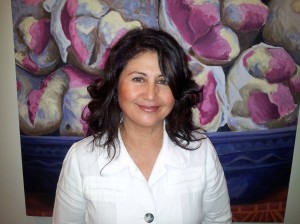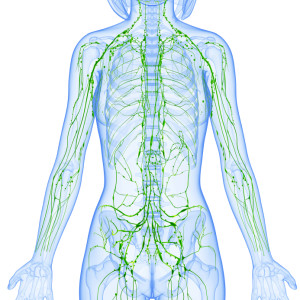Lymphatic Drainage Massage
Manual lymphatic drainage is a gentle and dynamic massage to encourage the natural drainage of the lymph from the body tissue. (Lymph is the fluid that circulates in the tissue space/interstitial throughout the lymphatic system.) The technique is light with gentle pressure mobilising fluid toward the lymphatic sites, with varying degrees of pressure in the actual sites (chest, neck, pelvis, axilla (armpit), inguinal (groin) region) and in association with the blood vessels of the intestines.
Boost your immune system and detoxify for a whole 60 minutes and guaranteed to aid your wellbeing and recovery.
Call Claire on 0438 216 351 to book your appointment
Contact Us to find out how we can help you
Book an appointment if you know what service you want
Testimonials/ Comments to check out what our other clients say about us
The lymphatic system has multiple interrelated functions:
- It is responsible for the removal of interstitial fluid from tissues in the body
- It absorbs and transports fatty acids and fats as chyle from the digestive system
- It transports white blood cells to and from the lymph nodes into the bones
- The lymph transports antigen-presenting cells (APCs), such as dendritic cells, to the lymph nodes where an immune response is stimulated.
The thymus gland and spleen are important in the function of the lymphatics –
The thymus gland acts to regulate the immune system by immune cell production and producing hormones that promote growth and maturation. Thymic hormones influence structures of the endocrine system, including the pituitary gland and adrenal glands, to assist in growth and sexual development. The thymus and its hormones also influence other organs and organ systems including the kidneys, spleen, reproductive system, and central nervous system.
The Spleen organ plays multiple supporting roles in the body. It acts as a filter for blood as part of the immune system. Old red blood cells are recycled in the spleen, and platelets and white blood cells are stored there. The spleen also helps fight certain kinds of bacteria that cause pneumonia and meningitis.
What are the benefits of Manual Lymphatic Drainage?
Lymphatic drainage is beneficial for most people, with a lymph condition or not, as it helps to stimulate your immune system and circulatory system, giving you an overall immunity boost. Overcoming or recovering from a stressful event, whether physical or emotional, will provide both a relaxing and therapeutic benefit.
- To reduce inflammation and swelling and to aid recovery from a temporary or chronic health condition
- Particular techniques encourage the flow of lymph movement, to move and drain fluid (swelling) congestion at lymphatic sites and to stimulate circulation, specific to post-surgery such a knee replacements and hip replacements to assist recovery
- Lymphatic Massage is gentle and relaxes the nervous system and aids the immune system. It is particularly beneficial for those recovering from respiratory infections, chronic fatigue, and also for the physically inactive; or recuperation from long illness or surgery; and ongoing rehabilitation such as cancer treatment plans
- It is effective as part of a detox health plan which may include dietary changes and supporting stop smoking/alcohol treatments
See our new ‘Add On’ treatments to improve your Lymphatic Drainage Treatment
Lymphatic Drainage + Back Scrub & Foot ReflexologyBook Gua Sha Lymphatic Facial & Foot Reflexology
Book Here
Schedule 1 hr Lymphatic Drainage Therapy Massage
- Try the Lymphatic Drainage Plus Exfoliating Back Scrub & Foot Reflexology!
- Book the 1.5 hours treatment with Add Ons with Claire
The Healing Practice Approach
My focus is improving my clients optimal health with a hands on approach of best practice methods. I assist my clients through various remedial physical therapies, to treat the cause of the problem as best as possible, using massage, medi-cupping, acupoints and Bowen. Clients can expect to do homework exercises to help themselves maintain their improvements.
Contact Us to find out how we can help you

Claire Cleaver is trained in Massage and other types of bodywork and has specialised in various areas including lymphatic manual drainage. Her approach is holistic and recognises that massage has many benefits including boosting the person’s endorphins which helps a person to recover and to overcome pain. Meet Claire! Introductory Phone call. Find out how we can help you. Mobile 0438 216 351
Schedule a Lymphatic massage
Health Fund rebates are available depending on your level of cover. Process your HICAPS claim on the spot and we accept payment by cash, eftpos, credit card and online transfers.
Book an appointment if you know what service you want
Testimonials to check out what our other clients say about us
Health Fund rebates are available depending on your level of cover. Process your HICAPS claim on the spot and we accept payment by cash, eftpos, credit card and online transfers.
Book an appointment if you know what service you want
Testimonials to check out what our other clients say about us
Gift Certificates are also available.
The Healing Practice
Albert Street
Forest Lodge NSW 2037
claire@thehealingpractice.com.au
M: 0438 216 351
More about problem conditions that require Lymphatic Drainage
Lymphoedema – also know as lymphatic obstruction, is a condition of localised fluid retention and tissue swelling caused by a compromised lymphatic system. There is both primary (which may be inherited) and secondary lymphoedema, (which occurs due to injury to the lymphatic vessels and nodes). An example of how secondary lymphoedema can develop is when a cancer patient that in the course of their treatment from surgery, has lymph nodes removed or destroyed from radiation therapy, and consequently are most at risk in developing lymphoedema.
Treatment for lymphoedema – may vary acording to the severity of the oedema and associated symptoms. Most people with lymphoedema manage their condition themselves, with a regime of self-care interspersed with other treatment and medical advice when appropriate. The most common treatments are a combination of manual lymphatic drainage, compression garments and bandaging. Although more ideal together, any of the treatments can be done individually.
Oedema – is a build up of fluid when the lymphatic system struggles (but is not damaged) to remove the excess fluid. Causes include the body’s reaction to hot weather, a high salt intake, stress and the hormones associated with the menstrual cycle or pregnancy or post-menopausal when hormones are dysregulated. Symptoms include swelling of body parts such as feet, hands and ankles, a feeling of stiffness or aching and weight fluctuations.
Treatment for oedema – though much less serious and mostly a short-term condition, is generally treated in the same way as lymphoedema. Pregnancy oedema is often relieved by elevation of the feet and rest. Whereas severe oedema accompanied by other symptoms; such as protein in the urine, sudden onset of headaches, blurred vision, epigastric pain, can be symptomatic of pre-eclampsia (a type of pregnancy-induced hypertension).
Post-menopausal oedema may be exacerbated by a less active lifestyle, more sedentary work and family needs overwhelming a woman’s coping abilities. This gap between meeting her needs and that of others can unhappily tip a woman towards weight gain and a dysregulation in some of her body systems.
Is Lymphatic Drainage Helpful After a Hip or a Knee Replacement?
Yes, lymphatic drainage massage can be very helpful after a hip replacement surgery, as it can significantly reduce swelling, pain, and discomfort around the affected area by promoting proper lymph fluid flow, thereby aiding in the healing process and improving recovery time; most experts recommend consulting with a qualified therapist to discuss the appropriate timing and techniques for post-surgical lymphatic drainage.
Key points about lymphatic drainage after hip replacement:
Why is there swelling /inflammation around the surgical site of your knee or hip?
It is important to know that the swelling (inflammation) is a normal by-product of the surgery. The swelling is a natural response to the surgery as a protective mechanism around the trauma site. However, this swelling can also reduce your recovery to some extent which is why lymphatic drainage can assist with your recovery.
Reduces swelling:
- The primary benefit is the reduction of post-surgical swelling due to the improved drainage of excess fluid from the area.
Pain relief:
- By decreasing fluid buildup, lymphatic drainage can also help alleviate pain and discomfort around the hip joint.
Improved circulation:
- The gentle massage techniques stimulate blood flow, which can further promote healing.
Scar tissue management:
- Lymphatic drainage can help to minimize the formation of excessive scar tissue around the incision site.
Important considerations:
- Consult your doctor:
- Always discuss with your surgeon or physical therapist before starting lymphatic drainage massage post-surgery to ensure it is appropriate for your specific situation.
Timing is crucial:
- Typically, lymphatic drainage massage is recommended to begin a few days after surgery, once the initial healing phase has started.
Qualified therapist:
It’s essential to seek a certified lymphatic drainage therapist who is experienced in post-surgical care.
What is the Function of the Lymphatics?
The lymphatic system is part of the circulatory system, comprising a network of thin tubes (lymph vessels) that are found throughout the body, and in a number of organs, such as the spleen, liver, thymus gland and bone marrow. The lymph vessels transport a clear fluid called lymph, directionally toward the heart. The vessels carry lymph to the various lymph nodes for ‘processing’.
What are T- and B-cells?
The lymph nodes are major sites of T- and B- cells and other immunity cells. T- and B- cells are highly specialised defender cells and are tailored to different germs. When your body is infected with a particular germ, only the T-and B-cells that recognise it will respond. These selected cells then quickly multiply, creating an army of identical cells to fight the infection. Special types of T- and B- cells ‘remember’ the invader, making you immune to a second attack.
Lymph Nodes
Lymph nodes act as filters or traps for foreign particles and are important in the proper functioning of the immune system. They are packed tightly with the white blood cells called lymphocytes and macrophages.
Lymph nodes also have clinical significance. They become inflamed or enlarged in various infections and diseases which may range from trivial, such as a throat infection, to life-threatening such as cancers. In the latter, the condition of lymph nodes is so significant that it is used for cancer staging, which decides the treatment to be employed, and for determining the prognosis. When swollen, inflamed or enlarged, lymph nodes can be hard, firm or tender.
Lymph nodes are not involved in the body’s system for dealing with toxicity which the liver and kidneys deal with. The lymphatic system is structured to address biological infections, as well as biological breakdowns or errors within the body, as in the response to cancer.
Movement makes your lymphatic system work
External movement : your lymphatic system requires you to move through your day with easy effort, light walking outside, in the house or workplace. Exercise such as physical classes (gym, yoga, pilates, etc), physical activities are all important to your overall body well-being.
Your internal movement: relates to your systems and organs functioning with easy regulation. This means comfortable digestion of foods and easy elimination of wastes via defecation / going to the toilet. When these struggle to function with ease, it can create backlog of fecal matter stored uncomfortably in your large intestine and disrupt your small intestine’s digestion of nutrients. Everything needs to work together in balance and harmony. When one system doesn’t work as well, it is likely to affect another part of that system and disrupt other systems too.
The lymphatic system depends on peristalsis (propulsion of the lymph due to alternate contraction and relaxation of smooth muscle, as in normal digestive function and internal movement ), and the movement of skeletal muscles (as in natural movement of the body) to propel lymph back to the cardiovascular system.
The circulatory system processes an average of 20 litres of blood per day through capillary filtration which removes plasma while leaving the blood cells. Roughly 17 litres of the filtered plasma actually get reabsorbed directly into the blood vessels, while the remaining 3 litres are left behind in the interstitial fluid.
The primary function of the lymph system is to provide an accessory route for these excess 3 litres per day to get returned to the blood. Lymph is essentially recycled blood plasma but is protein poor.
Read more at http://www.cancercouncil.com.au/hodgkin-lymphoma/#CqWW5avDOl4LKuGl.99
What is Cellulite
Cellulite occurs when underlying fat deposits begin to push through layers of collagen fibers, or connective tissue, under the skin (often in the buttocks and thigh areas, but also on arms, stomachs, and other common trouble spots, as well).
Facts about Cellulite
- Connective tissue can be weakened by hormones (reduced estrogen causes a decrease in new collagen production and the breakdown of older connective tissue), lack of exercise and muscle tone, excess fat, and poor circulation.
- It is also hereditary. So if your mother had it, you are more likely to get it as well
- 90% of women, at some stage in their life get cellulite, as opposed to 10% of men
- Women are designed to carry extra fat deposits for the work of pregnancy and the early postnatal period
- Even skinny women and ‘super-models’ get cellulite
- Even super-fit women get cellulite
- It’s true that cellulite is more noticeable on overweight women because the extra fat tissue under the skin pushes cellulite outwards
- It’s true that aging can cause more cellulite to appear as a natural progression of aging
- Cellulite looks dimpled and lumpy in appearance
- Cellulite is actually normal!
What you can do about cellulite
The best tips for reducing cellulite formation is the same stuff you are probably doing if you are embarking on a healthy living pathway. If you are not there yet or are considering it, here’s some simple tips to get you started along that pathway.
- The first step is to create your goal (e.g. getting healthier for a particular reason, losing weight for a particular reason, going on an event re fitness or attending a wedding, etc). It’s important to get specific about what your end-goal is, as getting healthier is too broad and loose. It can be easy to lose your way with just getting healthier.
- The second step is having that end-goal in sight of 4 weeks or 4 months or whatever the timeframe is, and working out what you need to do re achieving that goal. A plan that is a combination of improved nutritional goals, rest and sleep hygiene and exercise is going to deliver you sustainable results. Once that plan is started, you will find that the extra cellulite will shed itself along the way.
- The third step is to do the plan
Tips to help you be on your plan
- Drink more water
- Eat more green, leafy vegetables
- Eat good food and get rid of the junky stuff especially sugar as the excess converts to fat stores!
- Reward yourself with healthy treats so your mind and body can appreciate the difference
- Exercise in whatever way works for you, starting small and enjoying your exercise
- Lose weight, lose fat
- Having good ‘sleep hygiene’ (what’s that? at least 7-8 hours every night)
- Having a good ‘rest hygiene’ (what’s that? nurturing activities that are restful and restorative)
Book Here
Schedule 1 hr Lymphatic Drainage Therapy Massage
- Try the Lymphatic Drainage Plus Exfoliating Back Scrub & Foot Reflexology!
- Book the 1.5 hours treatment with Add Ons with Claire
Lymphatic Drainage Massage assists with –
- Lymphoedema
- Children with respiratory conditions
- Pregnant with oedema (fluid retention)
- Postnatal recovery
- After a miscarriage
- Menopause or hormonal alterations and disturbances
- Pre & Post-surgical operations – knee & hip replacements
- Cancer Treatment (such as breast cancer)
- Elderly people suffering with oedema
- Chronic fatigue syndrome
- As part of a ‘Detox’ health plan (such as dietary or ‘stop smoking’)
- Immune system deficiency
Contraindications for Manual Lymphatic Drainage
- Oedema that is the result of kidney failure, heart failure, liver disease, local infection, blood clots and DVT (Deep vein thrombosis).
- Active chemotherapy for cancer treatment.
Cancer and Massage
Often people worry that massage is contraindicated for various cancers and is likely to increase the cancer. This is not the case. Research shows that cancer develops and spreads because of changes to a cell’s DNA (genetic mutations) and other processes in the body.
There are many reasons to have massage during all stages of cancer. Direct massage should be generally avoided on tumours or treatment sites, primarily to avoid discomfort to the person or put pressure on the affected area and underlying organs. However, certain cancers such as Hodgkins Lymphoma, which is a cancer of the lymphatic system may require a different approach.
Read more at http://www.cancercouncil.com.au/17958/b1000/massage-and-cancer-42/massage-and-cancer-benefits-of-touch/#7WdH1tIHXqSddCxO.99
Massage products for Lymphatic Drainage?
Most massage oils can be used although it is fair to say that cold-pressed and organic processed oils / balms etc are better for any skin application, and more so when stimulating a compromised lymphatic system for whatever reason.
I hope this information will give you sufficient understanding of a lymphatic drainage massage and the benefits you can expect to receive to support and improve your health and wellbeing.


